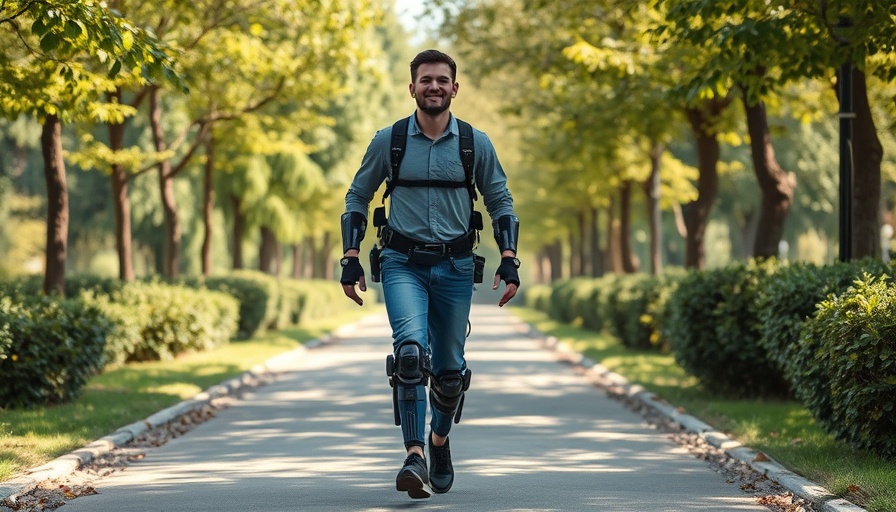
Understanding the Intersection of AI and Mobility Disorders
In a world where technology continuously reshapes our lives, the field of bioengineering is making significant strides, particularly in aiding individuals with mobility disorders. Researchers at Harvard University's Slade Lab are harnessing artificial intelligence (AI) to innovate solutions aimed at improving mobility. This combination of AI with bioengineering could revolutionize the way we think about rehabilitation and daily assistance for those grappling with mobility problems.
Neuromotor Control: A Key to Movement
Neuromotor control is a concept central to understanding how our bodies move. From walking to running to climbing, each motion requires a complex interplay of signals from the brain to muscles. As Dr. Patrick Slade of the Kempner Institute emphasizes, the brain manages various priorities simultaneously: speed, stability, and energy consumption. This intricate balance is akin to a real-time game of chess where every move is calculated based on immediate circumstances. Understanding these interactions is crucial for developing technologies to assist individuals facing mobility challenges.
The Role of Artificial Intelligence in Enhancing Mobility
AI plays a transformative role in enhancing our understanding of neuromotor control. By generating simulations that mimic various physical scenarios, AI helps researchers study how certain conditions affect movement. For instance, AI can simulate the experience of walking on an icy surface, allowing researchers to analyze potential adaptive responses in real-time. This research sheds light on how bioengineering solutions, like exoskeletons, can be tailored to meet the needs of individuals with mobility disorders.
Innovative Technologies: Dominating Mobility Assistance
One of the most exciting developments from the Slade Lab is the creation of exoskeleton devices designed to aid those with movement limitations. These devices utilize AI-driven insights to assist users in real-time, adapting to their movements and environment. Imagine a patient who has difficulty walking due to muscular dystrophy suddenly being able to navigate their environment with newfound independence. The implications for enhancing quality of life are staggering.
Future Trends in Mobility Solutions
As research in AI and biomedical engineering progresses, the future holds numerous opportunities for individuals with mobility disorders. Predictions suggest that within the next decade, more sophisticated and adaptable assistive devices will become commonplace, significantly improving rehabilitation outcomes and individual autonomy. These advancements may not only aid with mobility but also provide invaluable feedback to healthcare providers on patient progress.
This Matters to Your Practice: Improving Patient Outcomes
It's essential for health practitioners, particularly those involved in rehabilitation or geriatrics, to stay ahead of these advancements. As AI technology continues to evolve, integrating these tools into patient care plans can enhance rehabilitation efforts. Being proactive about these innovations will not only benefit patient outcomes but also position your practice as a leader in adopting cutting-edge healthcare solutions.
Are You Ready to Embrace the Change?
The landscape of healthcare technology is shifting rapidly, and keeping pace means being informed about tools that can transform patient care. The use of AI in mobility disorder solutions embodies a crucial step toward better patient experiences and rehabilitation outcomes. As a concierge health practitioner, understanding and implementing these technologies can elevate your practice and improve the quality of life for your patients.
This is your invitation to explore how AI can transform patient mobility assistance. How will you incorporate these insights into your practice to better serve your patients?
 Add Row
Add Row  Add
Add 






Write A Comment